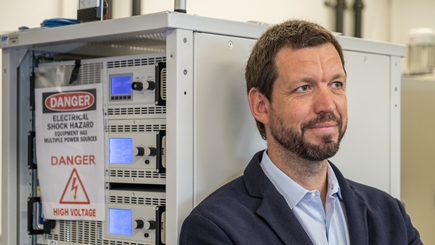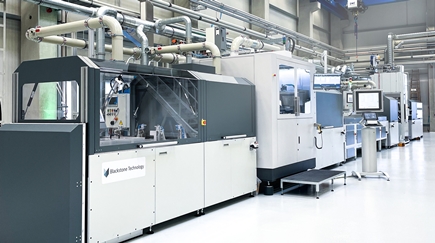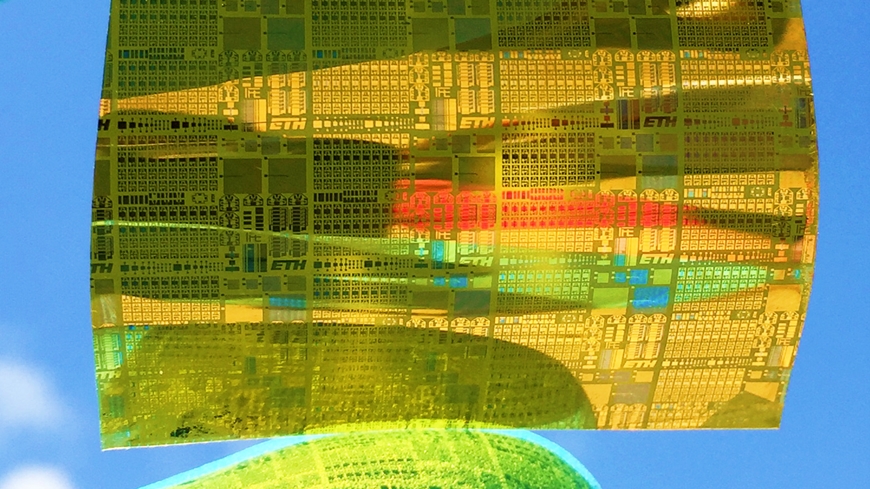Energy storage
Leveling the path for solid-state batteries
Lithium-ion batteries without flammable liquids - so-called solid-state batteries - are considered the next big thing in battery technology. If there were a breakthrough here, electric cars could become lighter and achieve greater ranges. Empa is pursuing various approaches and is supporting the industry in setting up "gigafactories" for battery production.

The solid-state battery is expected to take the electric vehicles to new heights: Vehicle manufacturers promise themselves and their customers shorter charging times, longer ranges, total fire safety and lower costs from the new battery technology. But there are still many unanswered questions about the super battery: Is it coming at all? And if so, when?
Competition among global players
In April 2022, the Renault-Nissan consortium of companies announced pilot production for solid-state batteries starting in 2024; their first car with this battery technology is to be launched on the market in 2028. VW Group is investing in the U.S. solid-state battery startup "Quantumscape." And Toyota, Ford, BMW and Mercedes-Benz have also entered the race and are investing in solid-state battery startups. Empa's battery research is therefore active in a highly competitive field full of big names. In Dübendorf, several teams from the Empa Materials for Energy Conversion research department are working on this next-generation battery technology.
The potential is immense, says Corsin Battaglia, who heads the department. The technology of the liquid-based lithium-ion battery will soon be largely at its limits, he says. A storage capacity of around 750 watt hours (Wh) per liter of battery volume is the maximum that can be achieved with current technology. This is due to the voluminous anode in each battery cell, which consists of graphite with lithium ions embedded in it.
Solid-state batteries, on the other hand, are expected to achieve a storage capacity of over 1200 watt hours per liter. And the cell can be made even more compact, because lithium metal can be used as the anode instead of graphite. In addition, such batteries are temperature-resistant to well over 100 degrees Celsius. The battery management system that monitors the temperature of the cells can therefore be simplified, and cooling, for example during rapid charging, is also less complex. Solid-state cells are therefore smaller, more powerful and faster to charge.
Squaring the circle
But the transition to next-generation battery technology is no walk in the park, even for global corporations with budgets in the billions. Empa researcher Arndt Remhof from Battaglia's department knows what hurdles solid-state battery technology presents: "The material we are looking for has to fulfill several properties at the same time," Remhof says. "First, it should be a very good ion conductor, but at the same time a very good electronic insulator." Excellent ionic conductivity is necessary for battery performance. Low electronic conductivity is important to prevent the cell from discharging itself.
And Remhof lists other requirements right away: "To exceed the energy density of existing Li-ion technology, the electrolyte must be stable against lithium metal." In other words, it must be stable against chemical reduction. At the same time, the electrolyte must be stable against oxidation when it comes into contact with the cathode. Only then is it possible to use cathodes with high electrical potentials and achieve the desired, high cell voltages.
Always in motion
In addition, the solid electrolyte should also be stable against aging processes - above all, no cracks or pores should form on the contact surface between the lithium anode and the electrolyte. The problem here is that the volume of the anode changes with every charging and discharging process. The inside of a solid-state battery is therefore in motion throughout its lifetime. The electrolyte has to survive all these changes.
Finally, as the battery charges and discharges, metallic lithium tends to form dendrites, fine lithium filaments that grow from the lithium anode to the cathode, which can cause a short circuit. This is also the reason why the use of lithium metal anodes in conventional liquid-filled Li-ion batteries is not possible. Of course, the solid electrolyte we are looking for should also prevent the formation of these dendrites.
Solution in two ways
Research teams at Empa are using two different approaches to try to solve the problems. One team is working on polymer solid electrolytes. Here, the researchers achieved a remarkable breakthrough in early 2022: Together with an industrial partner, they developed a polymer electrolyte based on polymerized salts with a high ionic conductivity at room temperature that is stable in contact with both metallic lithium and high-potential cathode materials and can withstand temperatures up to 300 degrees Celsius. In addition, this electrolyte is also very light, only about 1.3 times heavier than a liquid electrolyte. Experiments with laboratory battery cells the size of a two-franc coin have already been successful. Larger cells are now to be developed in an EU-funded project.
In the second approach, Empa researchers are developing solid electrolytes from hydroborates. "We have already filed a patent application in 2019 for an invention that allows us to crystallize these electrolytes from a solution," Remhof explains. This enables the production of solid-state batteries using processes that are also suitable for mass production. These electrolytes also have high ionic conductivity, high stability in contact with metallic lithium and high thermal stability, and are about the same weight as a liquid electrolyte. In 2020, researchers succeeded in demonstrating a 4-volt solid-state battery. By comparison, current liquid-filled lithium-ion cells operate also at voltages of 4 volt.
After so many success stories, an obvious question: what's the problem? Why isn't anyone producing this battery today? " Firstly, our research results are still quite new; secondly, there is as yet no inexpensive large-scale production for such high-purity hydroborates," answers Empa researcher Remhof. This is currently being developed together with an industrial partner, who is also already planning a large-scale production plant.
Swiss battery start-ups

Blackstone Resources AG, headquartered in Zug, is preparing to produce next-generation solid-state batteries in Döbeln, in the German state of Saxony. The company launched a novel 3D printing process in December 2021 – initially still building conventional liquid-filled lithium-ion batteries. But the process is adaptable to next-generation batteries. An Innosuisse project led by the Bern University of Applied Sciences (BFH) and involving Empa, is now set to make mass production of next-generation solid-state batteries possible. The second Swiss solid-state battery start-up, Swiss Clean Battery, which has licensed a technology from High Performance Battery, is also counting on Empa's expertise.
-
Share


| Bull's eye |
| In the FOXIP project, researchers form Empa, EPFL and the Paul Scherrer Institute developed a new printing ink and a transistor with "memory effect" – thanks to serendipity. more |
|
Empa - The book |
| Beyond Materials |
| Following the sun |
|
An Empa study now calculates the influence of energy storage systems on the maximum possible transition speed – and thus also on the probability of successfully mastering the climate crisis. |







